Trees Always Keep Giving | Interesting Branching, Trunks, Bark, Art
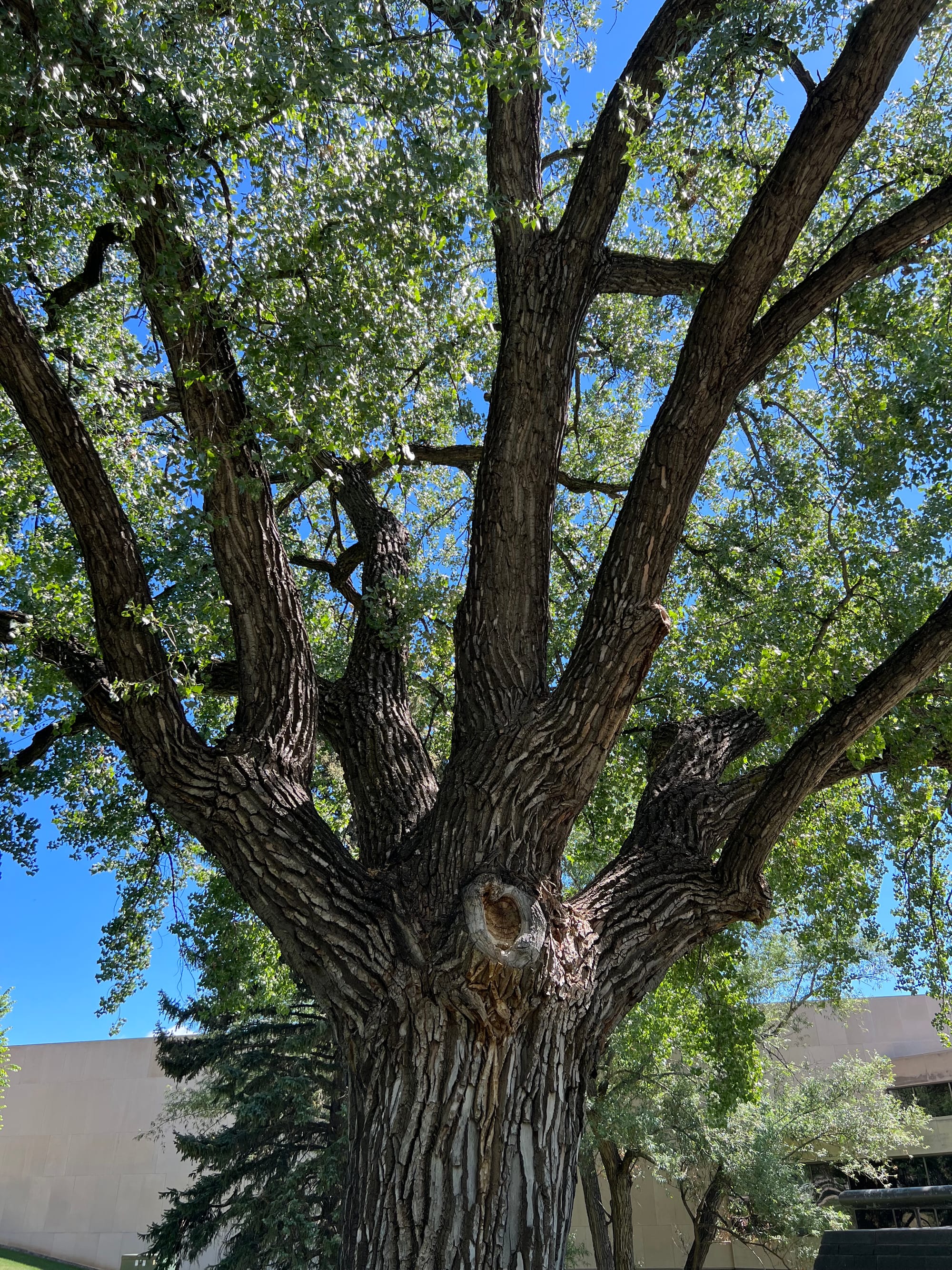
The video here shows over a dozen tree varieties with interesting bark and branching habits and how you can use old dead branches as garden art.
Below is an expanded discussion on four varieties covered in the video.
Cottonwood, Populus deltoides, Zone 2
Cottonwood trees are some of the largest in my area of the northern Great Plains, reaching over 100 feet. The majority of the Cottonwoods are located in the Missouri River floodplain.
When the river floods and the cottonwood seeds fly, many will stay behind and germinate as the water recede. Even though they are wonderful shade trees, the “cotton” they release can be a nuisance, sticking to window screens and air conditioning units. Personally, I can’t stop itching the outside of my nose when around the cotton seeds.
Mature Cottonwoods can be massive trees with deeply ridged and furrowed bark reaching over 100 feet tall. Cottonwoods can also live over 100 years.
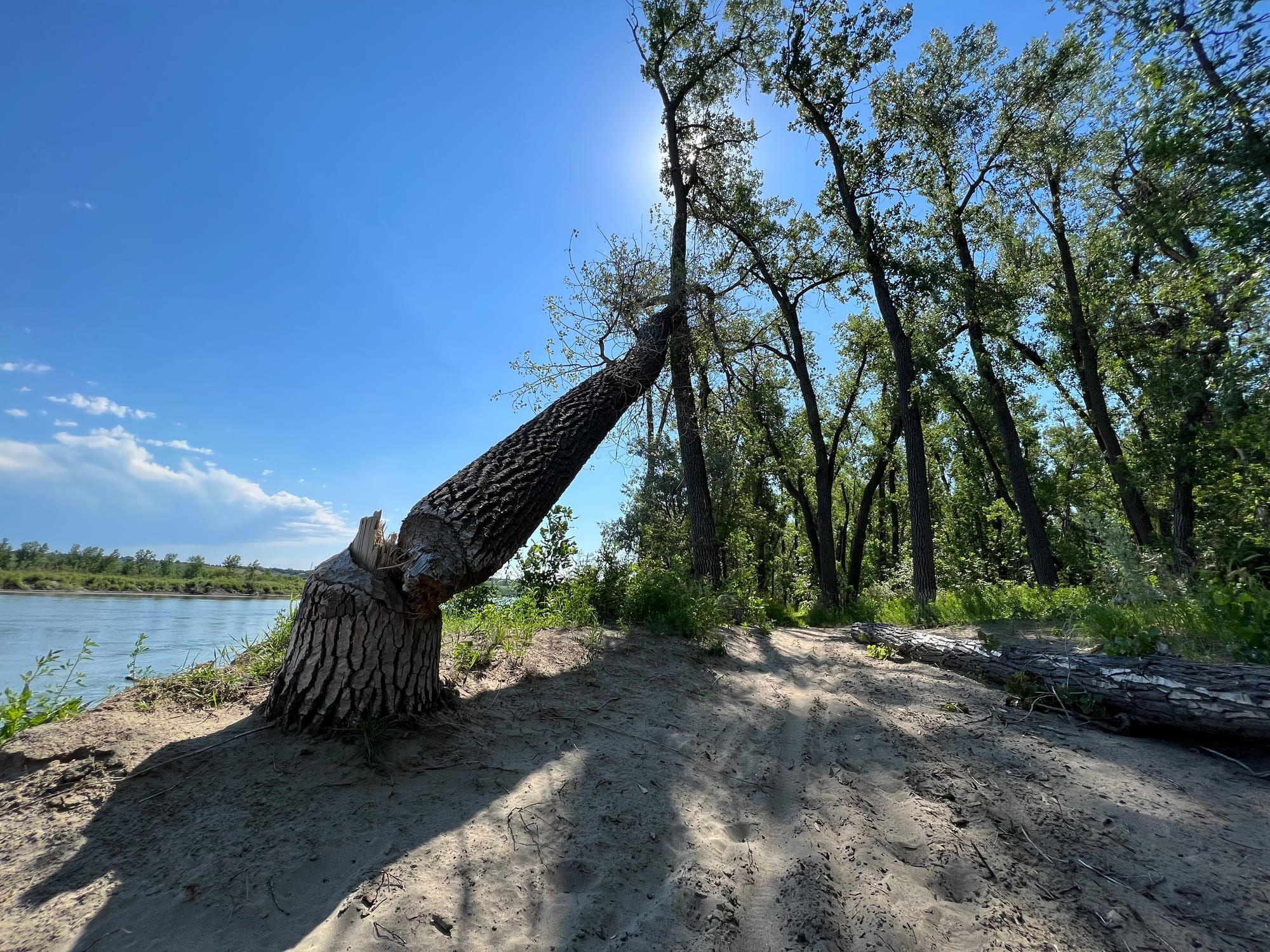
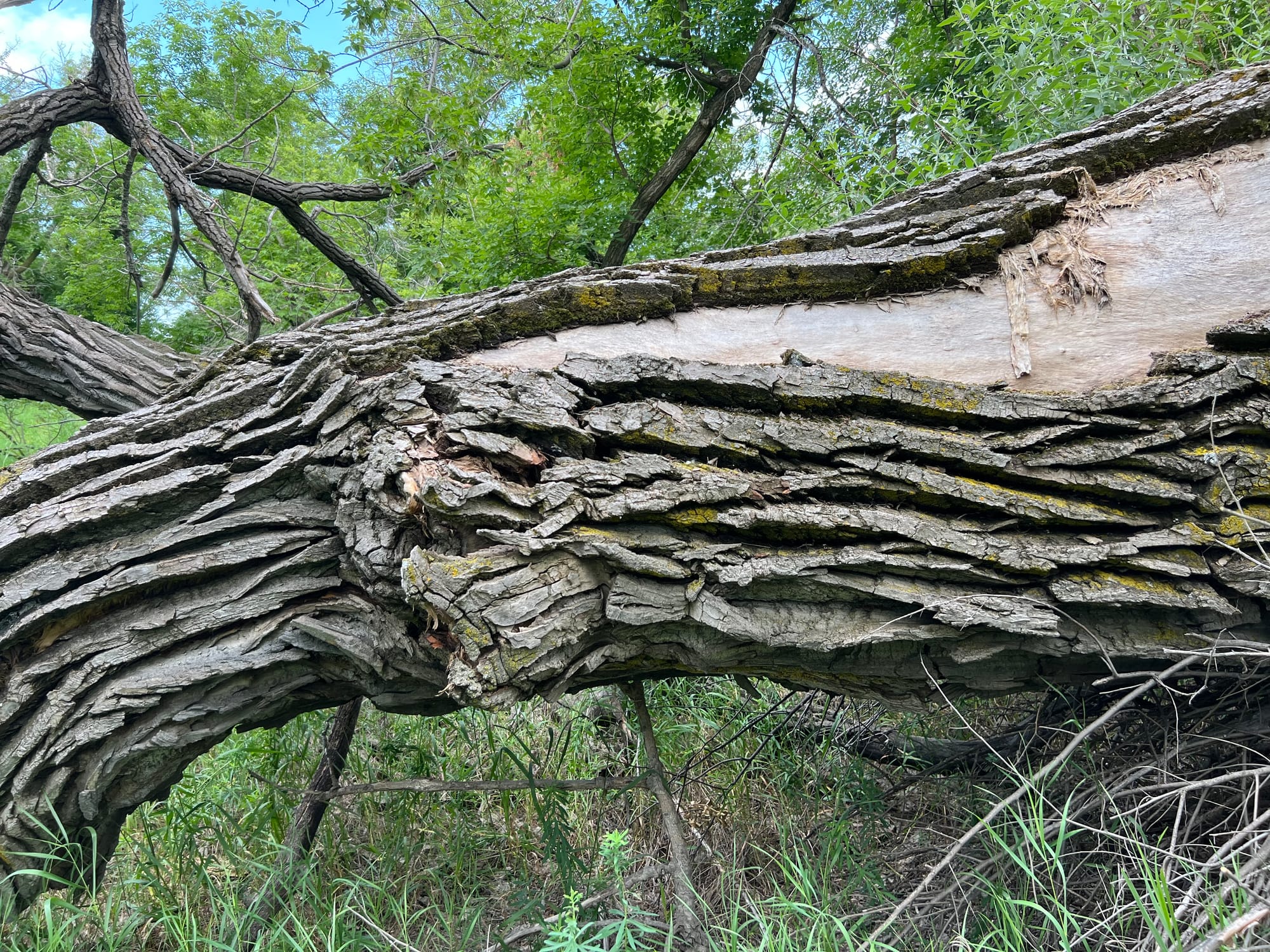
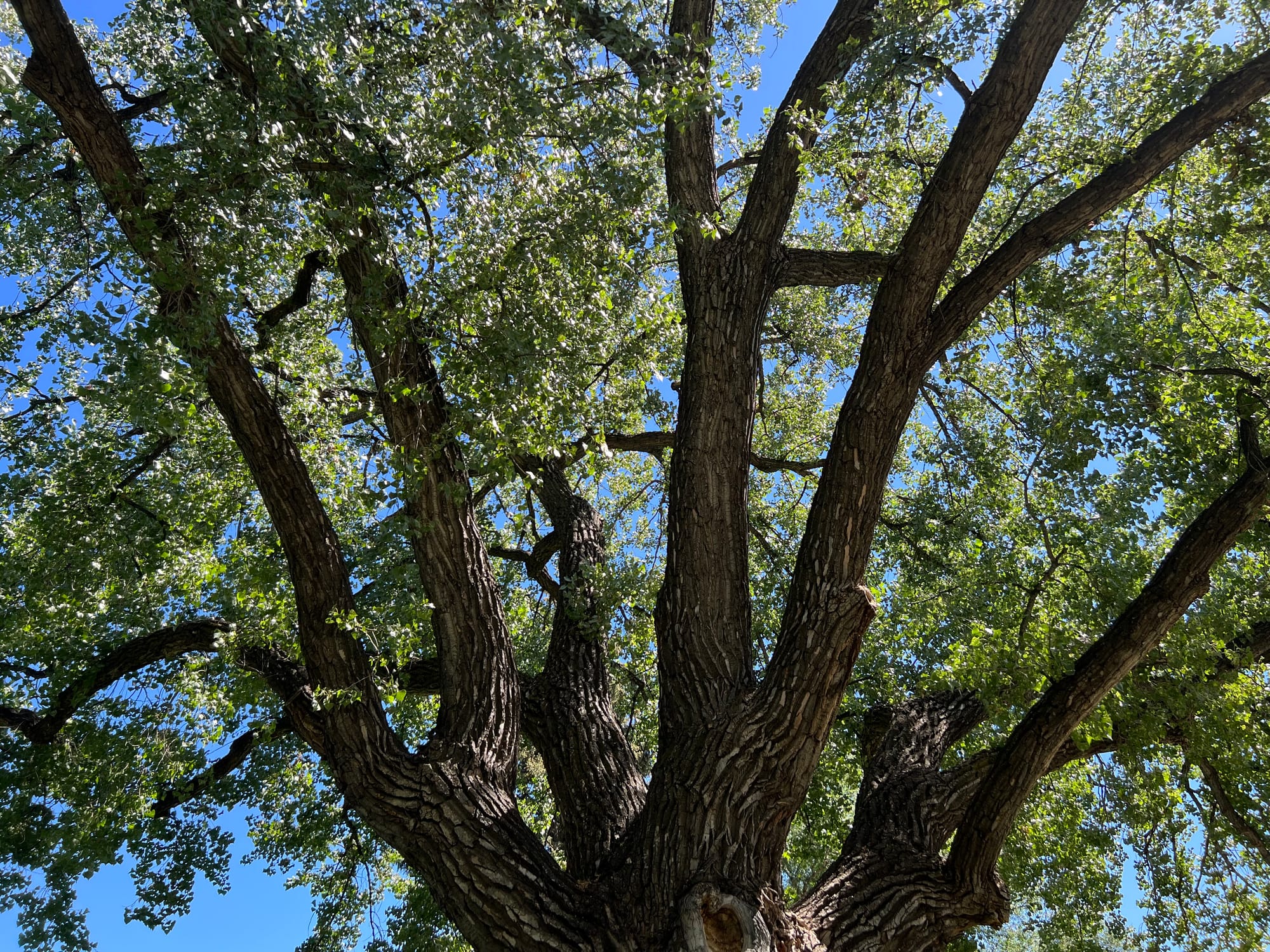
Cottonwood (L to R) Beaver Damage - Bark Closeup - Canopy
Due to the seed nuisance of native Cottonwoods, choose Robusta or Siouxland, which are seedless. Both of these varieties are fast-growing and long-lived (for a poplar), making them a great choice if you would like to establish trees quickly.
Robusta Poplar, Populus deltoides ‘Robusta’, Zone 3
- 60’H x 40’W
- Seedless
- Fast grower and very adaptable
Siouxland Poplar, Populus deltoides, ‘Siouxland,’ Zone 3
- 80’H x 40’W
- Zone 3
- Seedless
- Fast grower and adaptable, larger than Robusta
More information on Siouxland can be found here:
Blue Beech, Carpinus caroliniana, Zone 3
After seeing this tree recently at the University of Minnesota Arboretum, I decided I had to have one. I’m not sure why it is not more often promoted in the nursery trade, as it has a lot of interesting characteristics.
Maybe I just overlooked it all these years. I especially like the bark or trunk on this small tree, which gives it its other common name, Musclewood. American Hornbeam is another common name.
- 20-35’H x 20-35’W
- Bluish-gray bark with a “muscle” appearance
- Showy catkins for winter interest
- Does well in full sun to full shade
- Tolerates a wide range of soil pH, 4.0-7.4
- The Firespire variety has an orange-red fall color
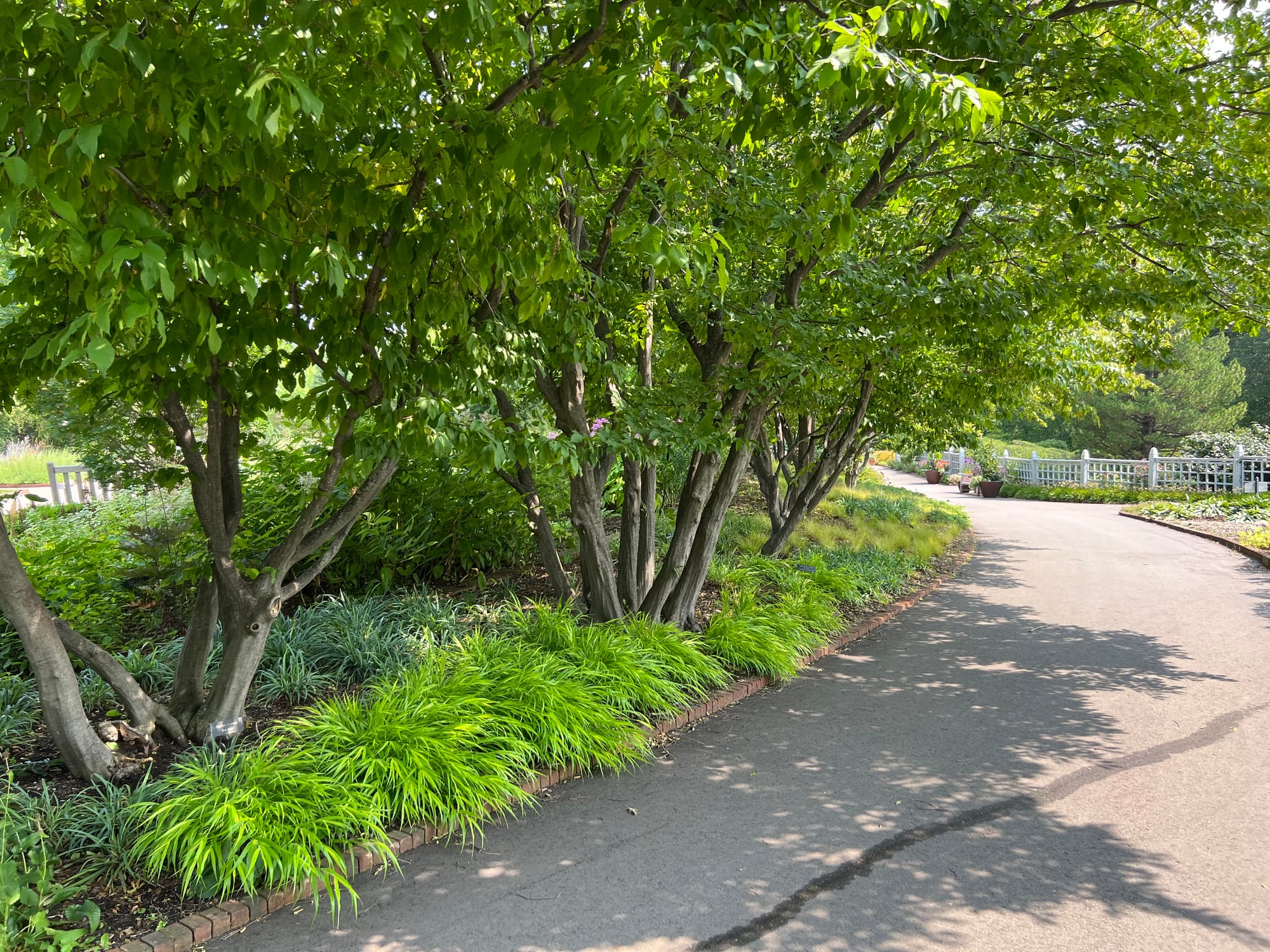
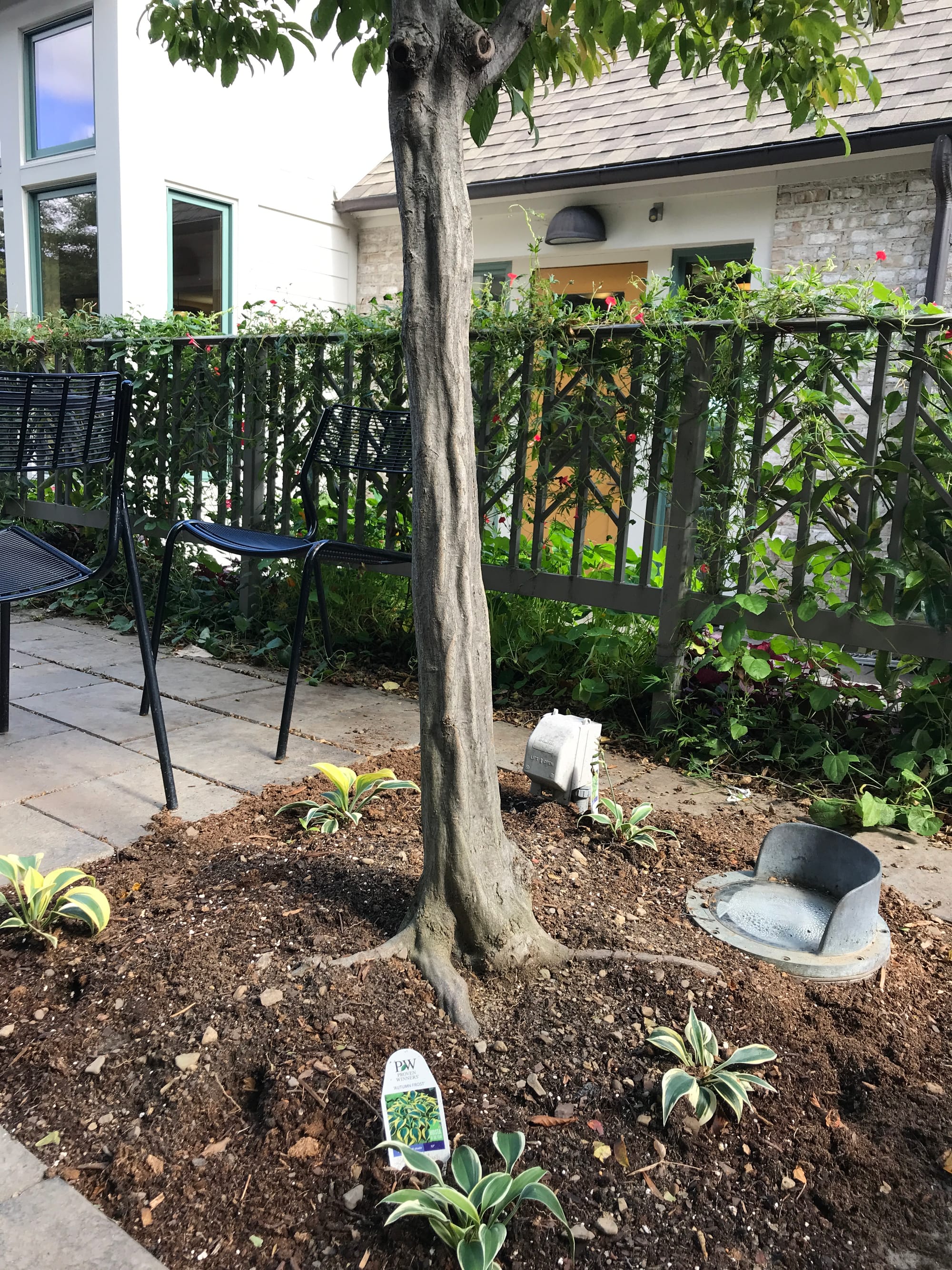
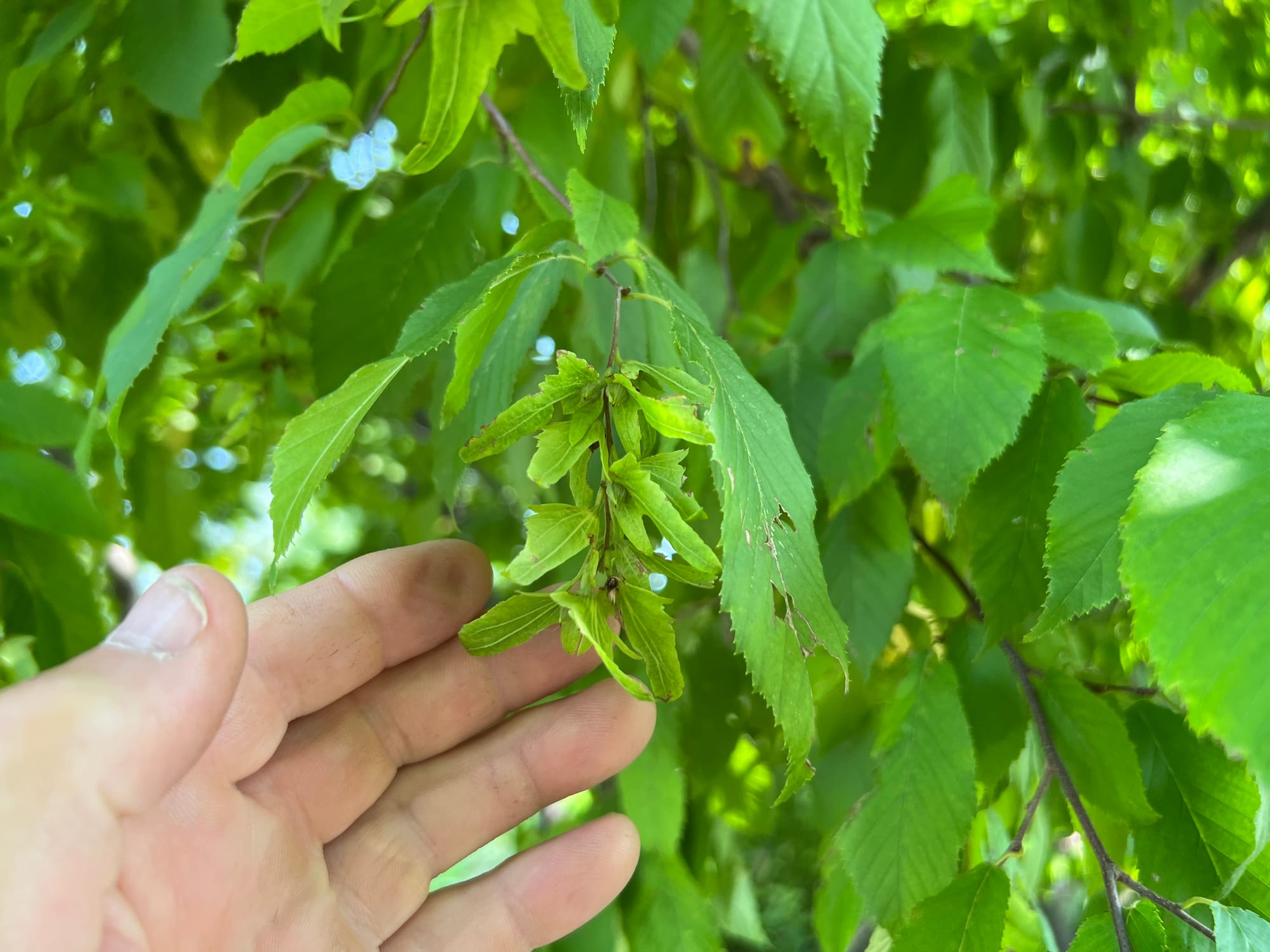
Blue Beech (L to R) Multi-trunk - Single Trunk - Seed
I’m looking forward to locating and planting this excellent small tree.
More information on Blue Beech can be found here.
Kentucky Coffee Tree, Gymnocladus dioicus, Zone 3-8
It is a great tree but likely less common in our landscapes due to its appearance in a garden center.
The large compound leaves are easily broken off the main trunk, making it a “tough sell” to customers. The trees often arrive as a 6-foot whip, which is basically a 6-foot stick. Try selling that for over $200. They can look horrible in the nursery trade. Planting by seed is a good option as they can be fast growers and will quickly establish.
I'm primarily drawn to the bark on this tree. It’s ripped!
- 60-75’H x 40-50’W
- Tolerates alkaline soil and dry sites
- Seed pods are considered messy
- Compound leaf for unique interest
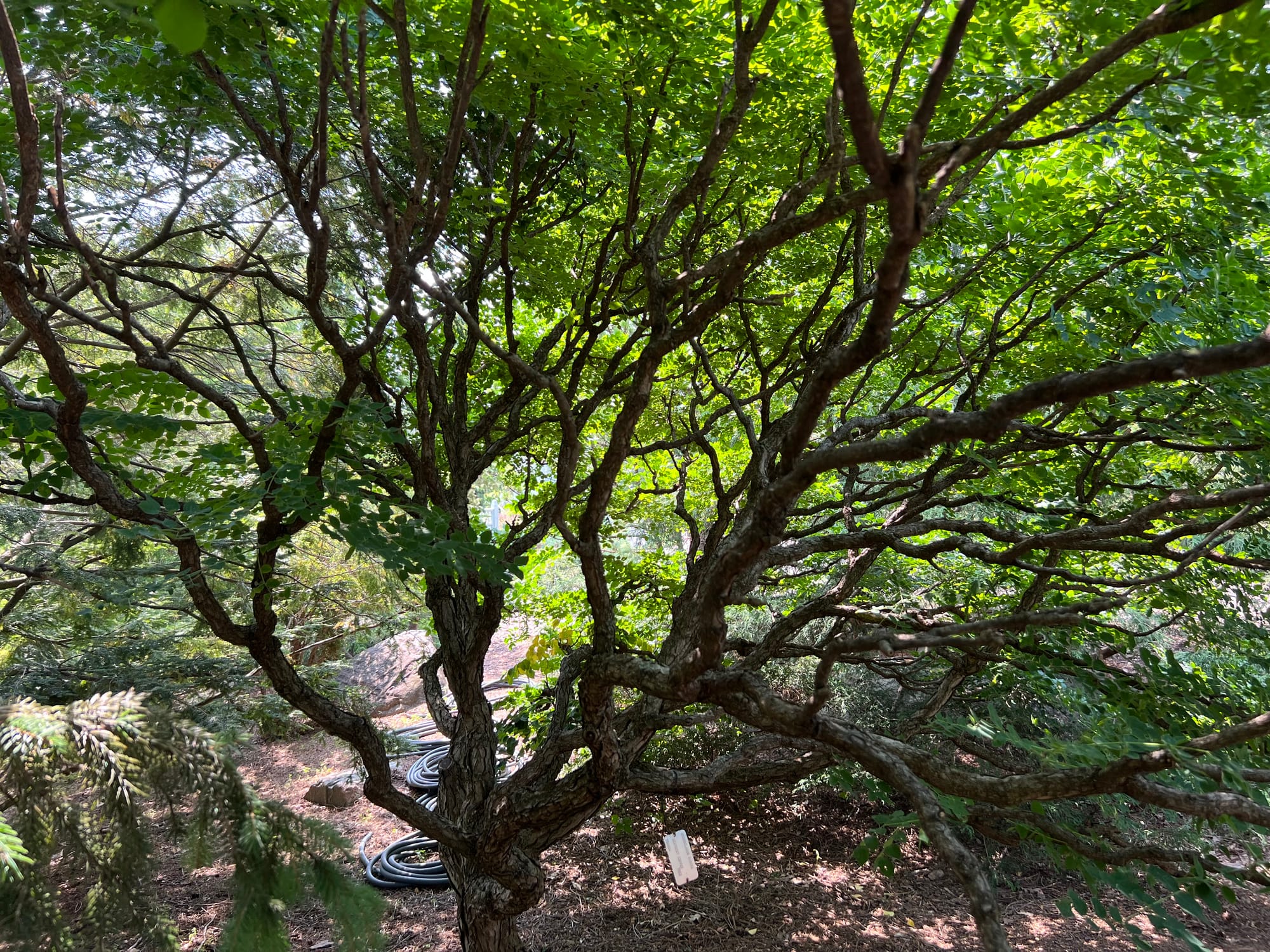
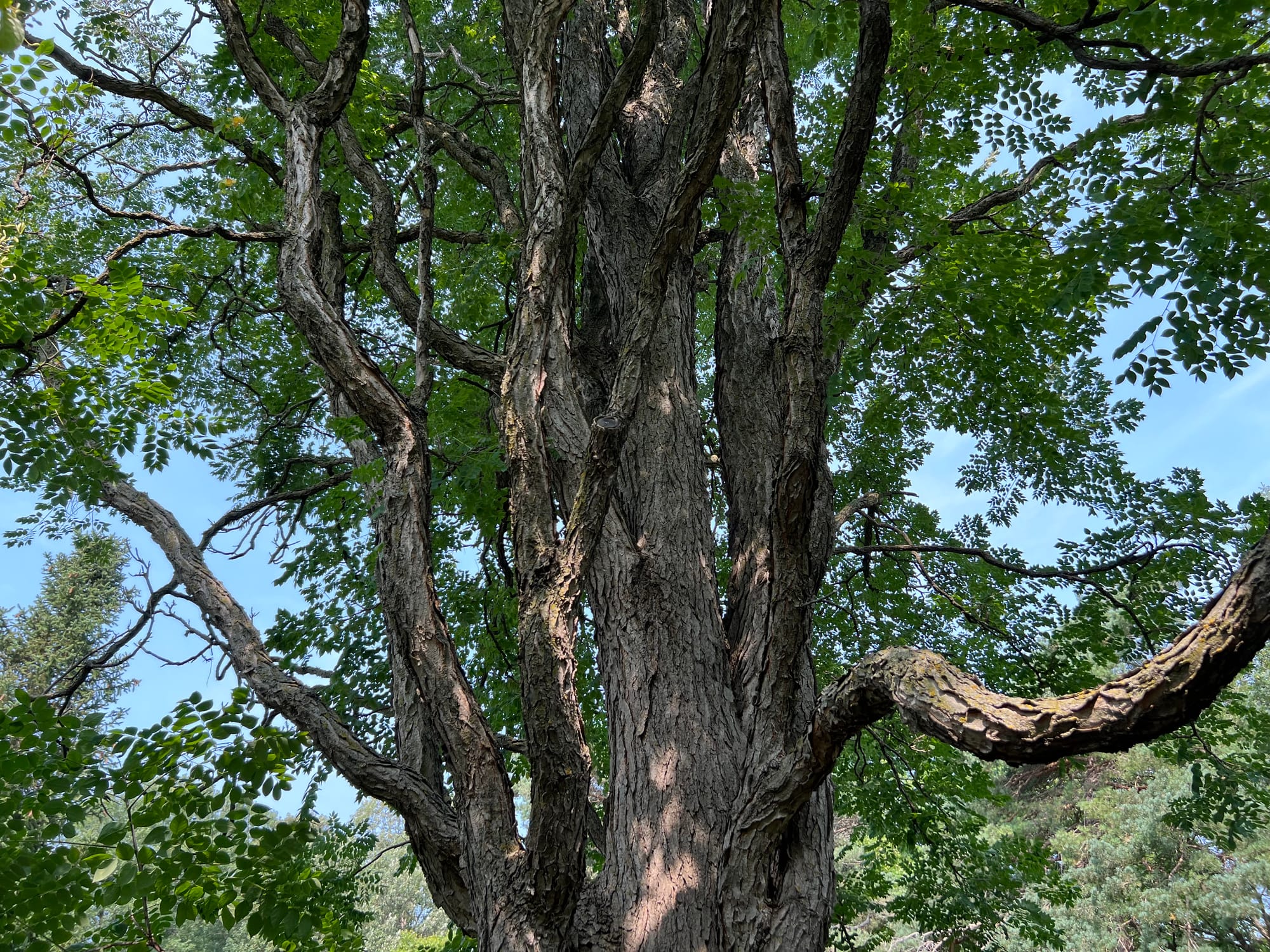
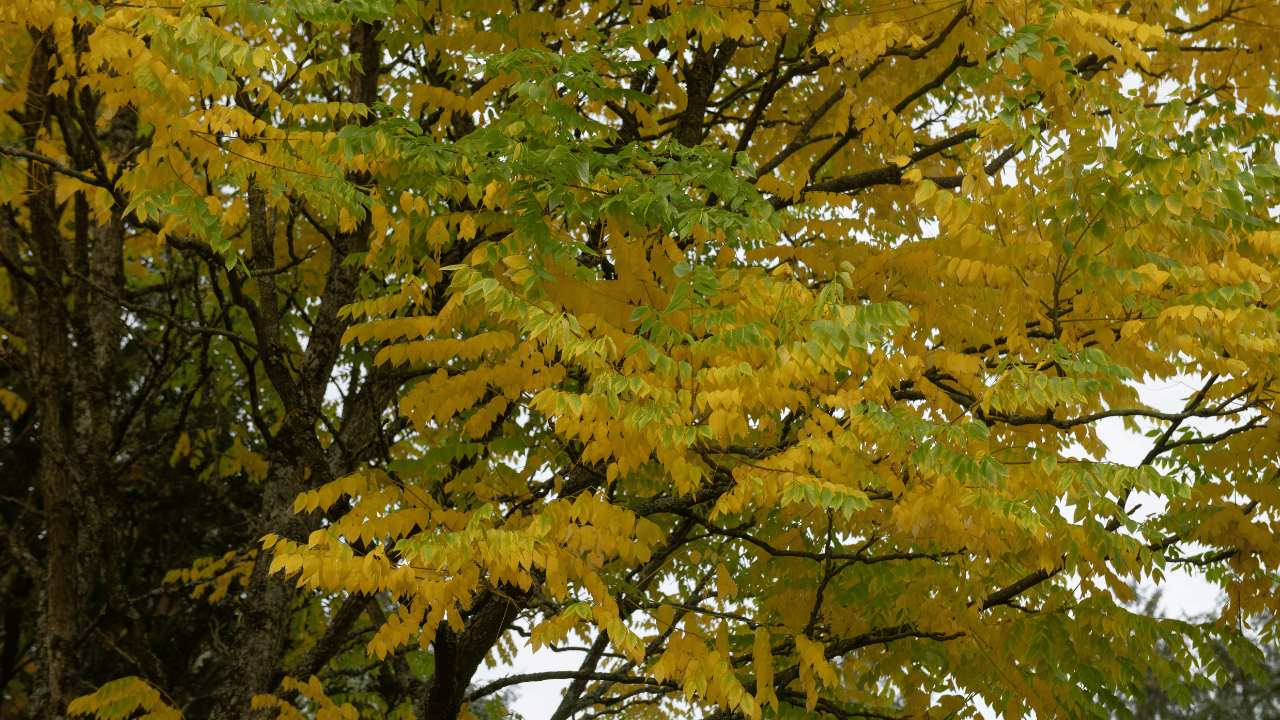
Branching, Bark, And Leaves On Kentucky Coffee Tree
More information on Kentucky Coffee Tree can be found here:
Red Bud, Cercis canadensis, Zone 4-9
I have yet to have luck growing the Red Bud tree. It is considered hardy to Zone 4 and my area of the northern Great Plains. The Red Bud is sensitive to root disturbance, and I attempted to establish it with a larger tree and a small root ball. If I try one again, I will choose a smaller tree.
The spring display of pinkish-red flowers is the most desired part of this tree. The flowers will emerge before the leaves, making the tree quite a show-stopper. It is a small tree with a shorter life span. Many of the Red Buds I have come across have unique ornamental branching. It's not usually as unique as the photo below, though.
For colder climates, look for the Minnesota seed strain.
- 20-30’H x 15-25’W
- Prefers moist soil
- Full sun to part shade
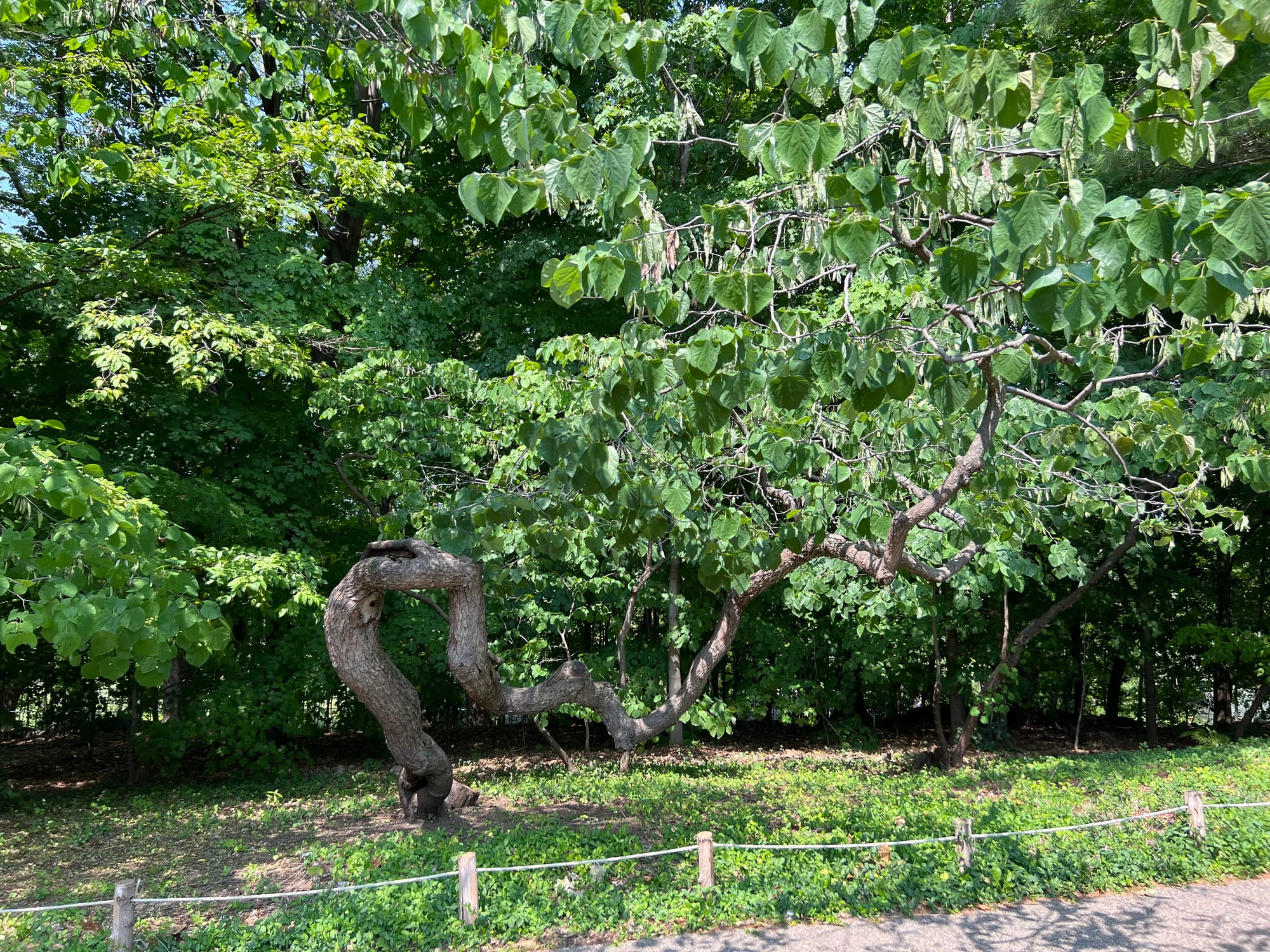
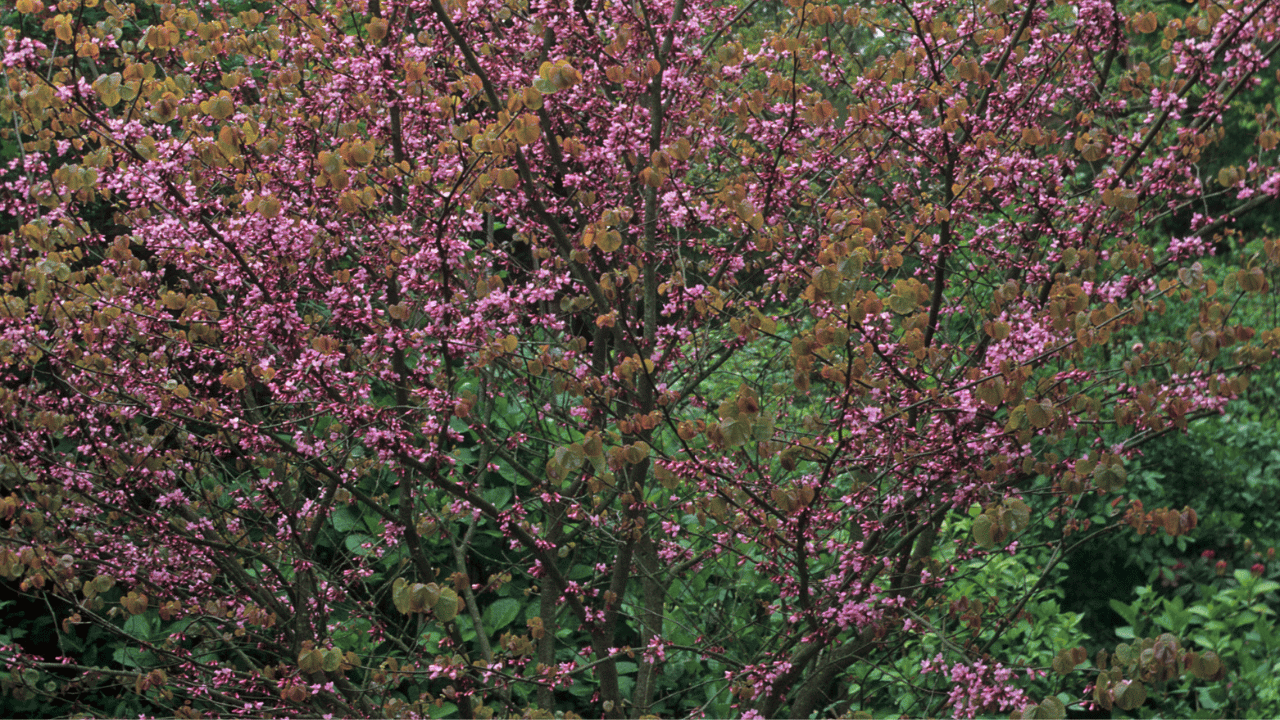
Red Bud Twisted Trunk - Spring Flowers
More information on Red Bud can be found here.
Trees can also be part art, part mystery. I've included a favorite example in the photo below. I’m pretty sure the dead branch is from an old Juniper tree. I love how this perennial garden uses it as a trellis and focal point.
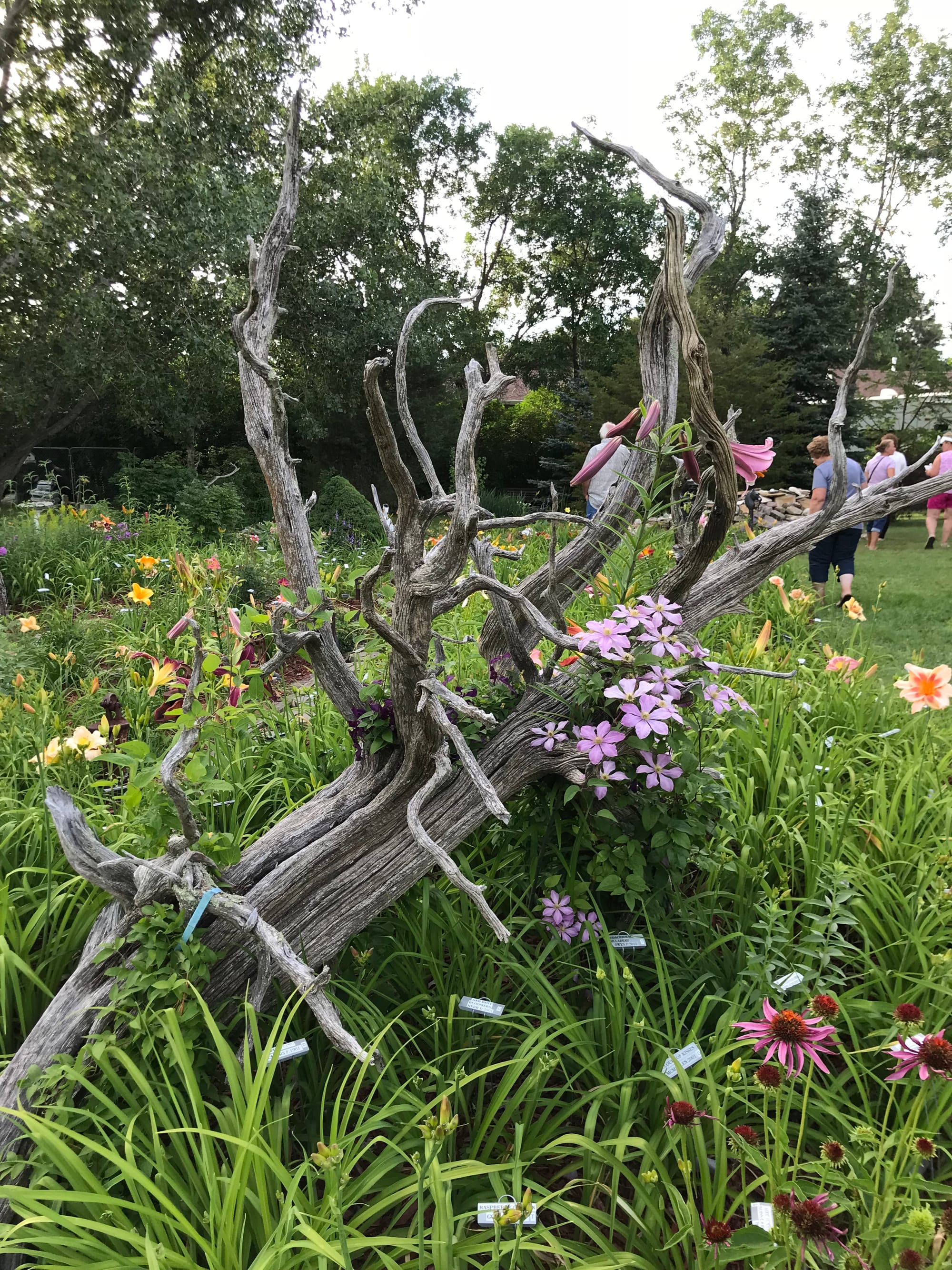
Thanks for stopping by Garden Hike!
Kevin
Garden Hike is supported by its audience. When you purchase through links on this site, we may earn a small commission at no additional charge to you. Thank you.
Click A.M.Leonard’s banner below to check out their great selection of tools and supplies.

